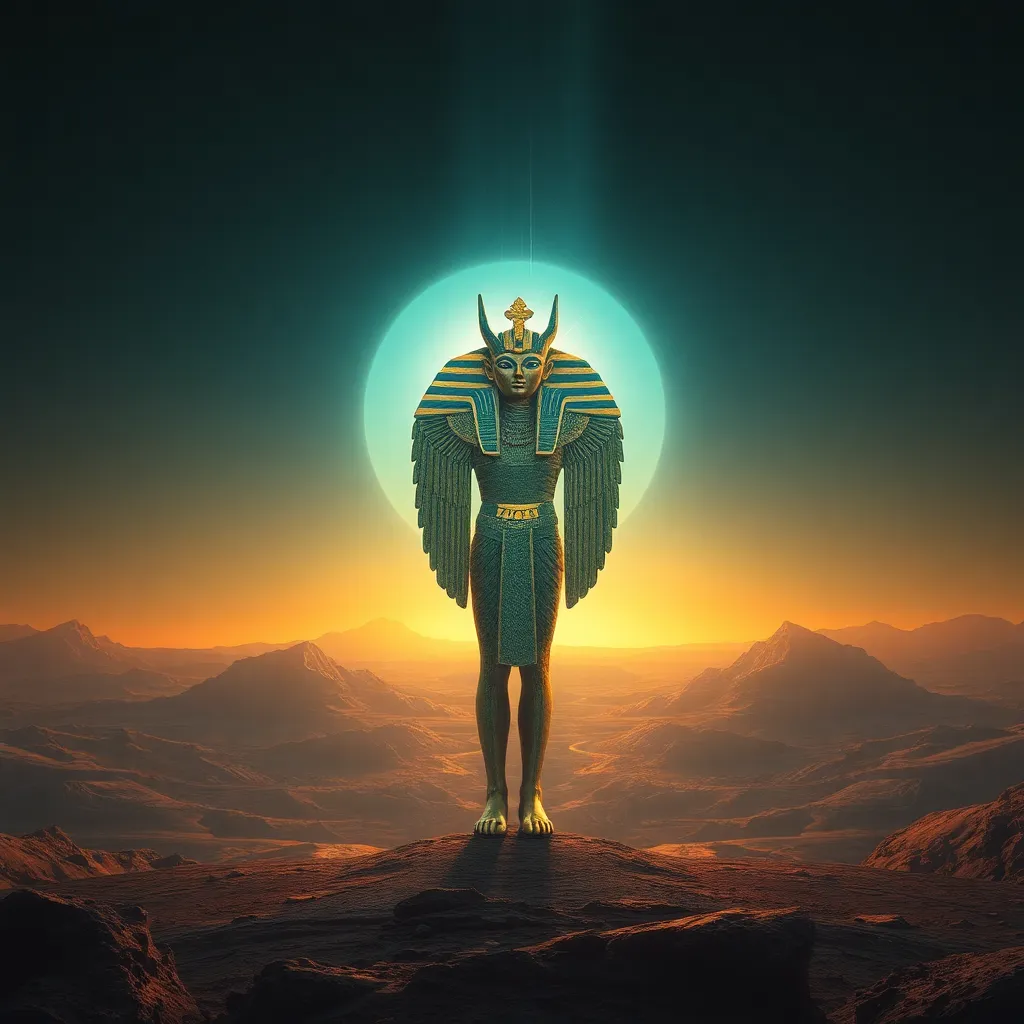The Aten and the Concept of Divine Transformation
I. Introduction
The Aten holds a unique position in ancient Egyptian religion as a manifestation of the sun and a symbol of divine power. It is often depicted as a radiant sun disk, representing life, energy, and the essence of creation. The concept of divine transformation plays a significant role in various religious contexts, and the Aten embodies this transformation, both in the natural world and within the spiritual realm.
This article aims to explore the Aten’s historical significance, its attributes, and the transformative aspects associated with it, providing insight into how it influenced ancient Egyptian spirituality and beyond.
II. Historical Context of the Aten
The Aten’s origins can be traced back to the early Egyptian pantheon, where solar deities were prevalent. However, its prominence surged during the reign of Amenhotep IV, who later changed his name to Akhenaten, marking a pivotal moment in Egyptian history.
Under Akhenaten, the Aten was elevated to the status of the sole deity, overshadowing traditional gods such as Amun, Ra, and Osiris. This shift marked a significant departure from the polytheistic beliefs that had dominated Egyptian culture for centuries.
Compared to other traditional Egyptian deities, the Aten was unique in its abstract representation and the ideological shift it represented. While traditional gods were often anthropomorphic and had rich mythologies, the Aten was a more abstract force, emphasizing a direct connection between the divine and the individual.
III. The Nature of the Aten
The Aten is characterized by several key attributes and symbols that convey its significance in ancient Egyptian thought:
- Sun Disk: The Aten is primarily represented as a disk with rays extending downward, often ending in hands that reach out to touch the earth and its inhabitants.
- Life and Energy: As a manifestation of the sun, the Aten symbolizes life-giving energy, warmth, and growth, essential for the sustenance of life on Earth.
- Universal Presence: The Aten is seen as a force that encompasses all aspects of life, providing light and nourishment to every living being.
In art and literature, the Aten’s depictions vary but consistently convey its association with light, life, and divine benevolence. The famous reliefs from Akhenaten’s reign showcase the Aten radiating its life-giving rays to the royal family, emphasizing its nurturing aspect.
IV. Divine Transformation in Egyptian Beliefs
Divine transformation is a central theme in ancient Egyptian spirituality, encompassing the cycles of life, death, and rebirth. The Egyptians believed that:
- Life on Earth was merely a stage in an eternal cycle.
- Death was not an end but a transformation into another state of being.
- The gods played a crucial role in mediating this transformation, guiding souls through the afterlife.
The Aten, as a symbol of life and renewal, was integral to these beliefs, representing the transformative power of the sun that brings forth life and sustains it through cycles of existence.
V. Akhenaten’s Religious Reforms
Akhenaten’s reign marked a radical shift from the traditional polytheistic practices of ancient Egypt to a form of monotheism centered around the Aten. This transformation had profound implications for:
- Art: Artistic styles shifted dramatically, favoring more naturalistic representations and emphasizing the Aten’s role in daily life.
- Culture: The worship of the Aten became a state-sponsored religion, fundamentally altering the cultural landscape of Egypt.
- Society: The focus on the Aten reduced the power of the priesthood associated with other deities, leading to sociopolitical upheaval.
Within Akhenaten’s doctrine, divine transformation was viewed as a direct relationship between the Aten and the individual, eliminating the need for intermediaries like priests, thus empowering personal spiritual experiences.
VI. The Aten and the Afterlife
The Aten’s influence extended into beliefs about the afterlife, where it was seen as a source of immortality and eternal life. Key aspects include:
- Afterlife Beliefs: The Aten was believed to illuminate the path to the afterlife, offering guidance and sustenance to the soul.
- Rituals and Practices: Worship of the Aten involved specific rituals aimed at harnessing its divine light, ensuring the soul’s transformation and safe passage to the afterlife.
- Transformation of the Soul: The Aten’s divine light was perceived as essential for the transformation of the soul, allowing it to transcend the physical realm and attain immortality.
The focus on the Aten emphasized a more personal and direct relationship with the divine, influencing how the ancient Egyptians approached their beliefs about life after death.
VII. Legacy of the Aten and Its Transformative Concept
The Aten’s legacy extends beyond ancient Egyptian spirituality, influencing later religious thought and practices. It can be compared with other monotheistic and transformative religions, such as:
- Monotheism: Similar to the Aten, monotheistic faiths emphasize a singular divine source, fostering a personal connection between the believer and the divine.
- Transformative Practices: Many religions incorporate concepts of transformation, whether through enlightenment, salvation, or rebirth, paralleling the transformative aspects of the Aten.
In contemporary discussions, the Aten’s symbolism resonates with modern interpretations of spirituality and transformation, highlighting its relevance in understanding the evolution of religious thought.
VIII. Conclusion
In summary, the Aten embodies profound concepts of divine transformation within ancient Egyptian spirituality. Its role as a singular source of life and energy illustrates the transformative power of the divine in both the physical and spiritual realms.
Reflecting on the significance of the Aten enhances our understanding of ancient Egyptian beliefs and their approach to the cycles of life, death, and rebirth. Future research could further explore the Aten’s legacy and its implications for the study of transformation across various religious landscapes.




